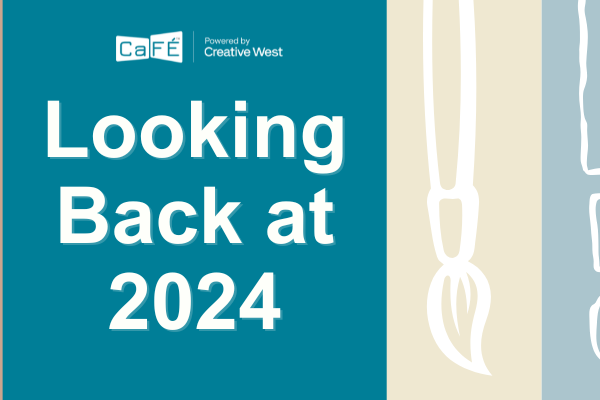
Crafting a Curriculum Vitae (CV) is like creating art; you need to understand and master the fundamentals before taking creative liberties. Below are a handful of best practices that will set the foundation for a professional and compelling artist CV.
Before we get started, let’s answer one question you may be asking yourself. What’s the difference between a CV and a resume? A CV is the record of all your professional experiences and often used in academia. A resume, on the other hand, is an abbreviated record, usually 1-4 pages, and often modified for a specific expertise, i.e. exhibitions, residency applications, and public art proposals. That being said, the advice provided here can be used for both CVs and resumes.
Modify your CV to match the application.
Elizabeth Keithline, artist, curator and previously grants and public art manager at Rhode Island State Council on the Arts, recommends artists rewrite and reorder their CVs every time they send it. Why? “Each application is different and it helps to tailor to it,” Keithline asserts. Make sure you highlight the experience and works that relate to the particular application. Include keywords from the application in your CV to demonstrate that your qualifications match the requirements and that you are an ideal choice.
Play to your strengths.
Similarly to the best practice above, it’s important to rearrange the order of your CV according to your individual strengths as an artist. Place the more important and relevant information near the beginning of your CV. For instance, you could put exhibitions before awards or honors if you have a great exhibition history.
Tell a story with your CV to convey your personal brand.
Liz Iracki, artist and former art consultant for Shapiro Art Consultants, believes in the power of an artist’s personal voice: “[CVs and resumes] are becoming more informative and less formal, illustrative rather than prescriptive. It is the job of the artist to tell a story through the work itself, the canvas, the clay, the charcoal. A CV further illuminates the artist experience, the philosophy of exhibition and the ingenuity in securing opportunities. Outside of an academic or museum setting, when appealing to personal and corporate collectors, artists should realize that their personal brand is often what pushes a sale over the edge. Many collectors want to relate to the story or be part of the story, so artists can be well served to embed potential for them to do so.” Be true to who you are as an artist and let your CV convey your unique story.
Keep your CV up to date.
This may seem obvious, but we often forget to keep records of our accomplishments. Develop a habit of documenting your exhibitions, grants, promotions, artist talks, etc. so that you do not lose track of relevant experience. We usually remember our positions and major exhibitions, but we may forget an accolade, publication or artist talk – the details that round out our experience.
Keep it simple and easy to read.
Layout and design are very important; hundreds of CVs will be read for one opportunity, so yours should be easy on the eye and easily scannable so that the reviewer can quickly see your qualifications and experience. Organize content with clear headers. Select typefaces and sizes that facilitate reading. Consider simple and straightforward fonts like Arial, Helvetica, Times New Roman, or Palatino. Depending on the font, size 10-12 should be readable. Note: Times New Roman is very small at 10-point size. Avoid unusual typefaces that may detract from your content. And most importantly, use white space; margins are your friend!
Edit. Then edit again. And again.
This one may seem obvious to some, but you’d be surprised what typos make their way into our CVs. Thoroughly edit your work. Make sure your format is uniform. For example, if you use bullet points in one job description, use it in all job descriptions. Don’t forget to have someone else review your CV. It’s helpful to have someone removed from the content review with fresh eyes.
Keep a Master copy.
You should always keep a comprehensive master copy of your CV. This allows you to craft a shorter CV that speaks to a particular audience, opportunity and required length. This way you can easily add or subtract relevant categories and items. You don’t want to forget all of the incredible work you’ve accomplished along the way!
Save as a Word document and send as a PDF.
It’s good practice to save your CV as both PDF and Word files. If you maintain a master copy as a Word document, you can easily edit and update the content. PDF files are the recommended format for submission because spacing, margins, and formatting are retained across computer platforms. You should always choose to send a PDF.
Check out these helpful resources for more recommendations and exemplary templates:
- Visual Artist Curriculum Vitae: Recommended Conventions – http://www.collegeart.org/standards-and-guidelines/guidelines/visual-art-cv
- Get it Right the First Time: An Introduction to Creating Your Artist Résumé by Susan Myers – http://www.chatham-kent.ca/SiteCollectionDocuments/thames_art_gallery/How%20to%20write%20an%20artist%20resume.pdf
- How to Write an Artist’s CV in 10 Steps – https://thepracticalartworld.com/2011/02/12/how-to-write-an-artists-cv-in-10-steps/
- How to Write an Artist’s CV When You Don’t Have Much (Or Any!) Professional Experience – https://thepracticalartworld.com/2013/04/09/how-to-write-an-artists-cv-when-you-dont-have-much-or-any-professional-experience/
- The Curriculum Vitae for Artists – http://www.artbusinessinfo.com/cv-for-artists.html
Written by Elysian Koglmeier




